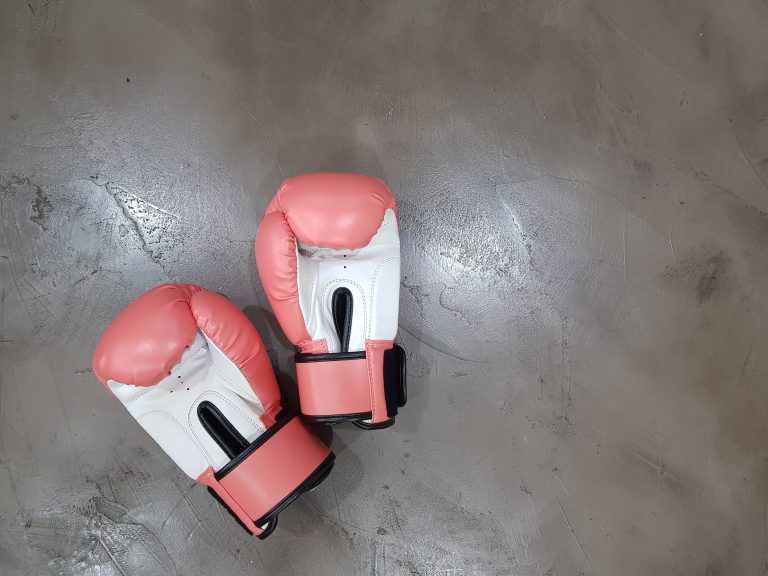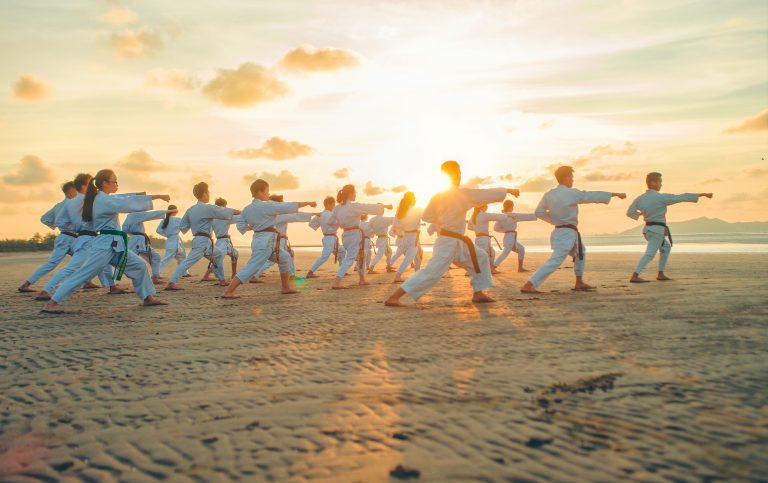Ist der Karate- und Judo-Gi dasselbe?
Wenn man an japanische Kampfkünste denkt, kommen Karate und Judo einem unmittelbar in den Sinn. Beide legen großen Wert auf Tradition und eine einheitliche Uniform, den ‘Gi’. Doch sind der Karate- und Judo-Gi tatsächlich dasselbe?
Der schnelle Antwort ist: Nein, sie sind nicht dasselbe. Obwohl diese beiden Kampfkünste ihren Ursprung in Japan haben und ähnliche Uniformen tragen, gibt es einige bedeutende Unterschiede zwischen den beiden.
Material und Dicke des Stoffs
Ein wesentlicher Unterschied zwischen Karate- und Judo-Gi besteht im Material und der Dicke des Stoffs. Der Judo-Gi ist aus robustem und dickerem Material gefertigt, da das Judo-Training viel körperbetonter ist als das Karate-Training. Da Judo-Techniken auch stärker auf den Judogi wirken, ist es wichtig, dass der Anzug dafür ausgelegt ist, dies auszuhalten. Der Karate-Gi hingegen ist aus einem leichteren Material hergestellt, um eine größere Bewegungsfreiheit und Flexibilität zu ermöglichen.
Ärmellänge
Ein weiterer Unterschied zwischen den beiden Uniformen besteht in der Ärmellänge. Die Ärmel des Karate-Gi sind in der Regel kürzer als die des Judo-Gi. Dadurch ermöglicht der Karateanzug eine bessere Beweglichkeit der Arme und Hände bei Karate-Techniken. Bei Judo hingegen sind die Ärmel länger, um es dem Gegner schwerer zu machen, während des Kampfes eine Hebelwirkung zu erzielen, um den Gegner auf die Matte zu werfen.
Farbe des Gürtels
Eine weitere Unterscheidung zwischen Karate- und Judo-Gi betrifft die Farbe des Gürtels. Bei Karate ist die Farbe des Gürtels innerhalb des Systems klar definiert, beginnend mit dem weißen Gürtel für Anfänger und endend mit dem schwarzen Gürtel für Erfahrene. Im Judo hingegen gibt es durch die verschiedenen Gürtelstufen auch unterschiedliche Farben, aber sie bedeuten nicht unbedingt eine klare Hierarchie oder Rangfolge.
Zusammenfassung
Zusammenfassend lässt sich sagen, dass der Karate- und Judo-Gi nicht das gleiche sind. Beide Uniformen haben ihre jeweils eigenen Eigenschaften und Unterschiede und sind auf die Bedürfnisse und Gegebenheiten der jeweiligen Kampfkunst ausgerichtet. Es ist also wichtig, die richtige Uniform für die jeweilige Kampfkunst zu wählen, um das Training optimal zu unterstützen.
Is a Karate and Judo Gi the Same?
A Gi is a traditional uniform worn in many martial arts disciplines. It is a fundamental part of the practice because it is an essential part of the training process. The Gi is a symbol of respect, discipline, and dedication to martial arts.
However, due to the plethora of martial arts styles, there is a general misconception about the Karate and Judo Gi. While both uniforms appear to be similar, they have several differences that can be easily mistaken for being the same.
In this article, we will provide answers to some frequently asked questions about the Karate and Judo Gi, and their differences.
FAQs about Karate and Judo Gi
1. What is the difference between a Karate Gi and a Judo Gi?
The primary difference between Karate and Judo Gi is the cut and the thickness. While Karate Gi is generally cut shorter, with sleeves and pants that are tapered, the Judo Gi, on the other hand, is cut longer, wider, and heavier.
Judo Gi is designed to be more durable and withstand the grappling techniques typically used in Judo. It is made from a heavyweight fabric that can withstand the pulling and grabbing in Judo, making it more substantial and stiffer than the Karate Gi.
In contrast, Karate Gi is designed to be lightweight and enable high kicking and striking techniques. As a result, it is typically made from a lightweight and breathable fabric.
2. Can I wear a Judo Gi for Karate or vice versa?
While it is possible to wear a Judo Gi for Karate or vice versa, it is not advisable. A Judo Gi is usually heavy, thicker, and stiffer, making it challenging to execute high kicks and dynamic moves required in Karate. In contrast, Karate Gi is not durable enough to withstand the grappling and throwing techniques used in Judo.
It is essential to note that different martial arts disciplines have specific uniform requirements. Therefore, it is best always to check with your instructor to avoid any confusion.
3. What fabrics are used to make Karate and Judo Gi?
Karate Gi uniforms are usually made from a lightweight, breathable cotton or polyester blend, while Judo Gi is usually made from a heavyweight cotton blend to withstand the grappling techniques used in Judo. The cotton material used in Judo Gi is thicker and stiffer than the one used in Karate Gi.
Often, some Judo Gi manufacturers combine cotton and polyester to add strength and durability to the uniform. The use of cotton in martial arts uniforms offers several benefits, including breathability, flexibility, and comfort.
4. Can I wear a colored Gi for Karate or Judo?
Most martial arts disciplines require students to wear a traditional white Gi as part of the uniform. However, some schools allow students to wear a colored Gi as an alternative. In both Karate and Judo, the color of the Gi represents different ranks or levels.
For instance, a blue or black Gi is required for Judo tournaments, while Karate tournaments allow colored Gi as long as it is approved by the event or organization.
5. How do I choose the right size for a Karate or Judo Gi?
Selecting the right size for a Karate or Judo Gi is crucial in ensuring maximum comfort and mobility. The size of the Gi is usually determined by height and weight.
In general, Karate Gi is cut shorter and closer to the body, while Judo Gi is cut longer and looser. When buying a Gi, be sure to check the manufacturer’s sizing chart to ensure an accurate fit.
Conclusion
In summary, while the Karate and Judo Gi may seem similar, there are notable differences in their cut, thickness, and fabric used. While it is possible to wear one for the other, it is generally not advisable as each uniform is designed to suit the requirements of the specific martial arts discipline.
Selecting the right uniform size is also essential in ensuring maximum comfort and mobility during training. Always check with your instructor before making any changes to your uniform to avoid confusion and non-compliance with the school’s uniform policy.
Inhaltsverzeichnis






